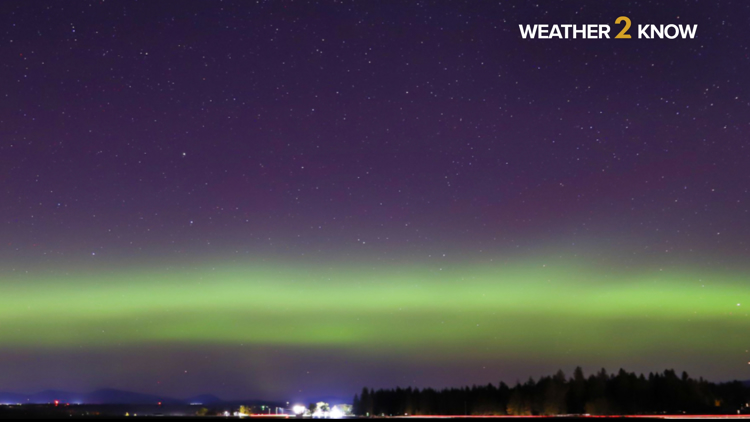MOLINE, Ill. — From Aug. 17-19 there's a chance that the Quad Cities area, especially in the northern hometowns, could see the northern lights.
The National Ocean Atmospheric Administration (NOAA) Space weather prediction center has a G1 (minor) geomagnetic storm watch tonight, a G3 (strong) geomagnetic storm watch on Aug. 18, and a G2 (moderate) geomagnetic storm watch on the 19th.
These storms can drive the Aurora Borealis farther south; as far south as Iowa, from its usual position over the north pole.
Far northern cities like Minneapolis and Milwaukee can see the northern lights directly overhead, but here in the Quad Cities, we'll be able to see them on the horizon.
If you want to see the lights, it's best to head north. It's also recommended to go outside city limits since the northern lights can be drowned out by light pollution. The moon can also affect seeing the lights, so it is best to avoid looking towards the moon.
Tonight, we will have mostly clear to partly cloudy skies, which allows for better visibility, making it a good night to watch the horizon.
This southward expansion of the northern lights comes from recent explosions on the surface of the sun that sent clouds of charged particles, known as coronal mass ejections, hurtling through the solar system. These particle clouds are predicted to collide with Earth's magnetic field, resulting in the display of red, green and purple lights in the sky.
Since we're under a G3 geomagnetic storm watch,h there could be disruptions to GPS and fluctuations in the power grid, but they aren't likely to have much of a noticeable impact.



